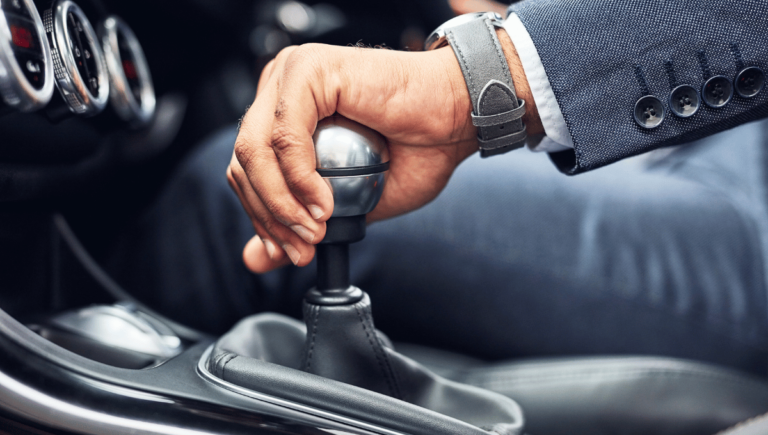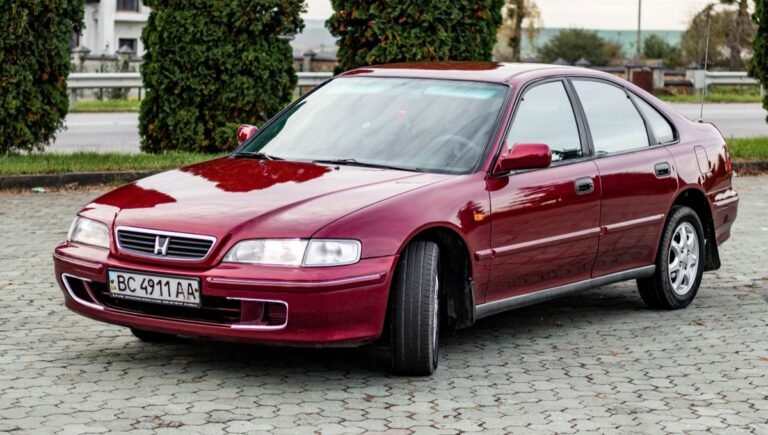Do Wheel Spacers Help With Rubbing? Unveil the Truth!
Wheel spacers can help with rubbing by increasing the distance between the wheel and suspension components. This can prevent contact during turns or over bumps.
Wheel spacers are commonly used to improve the stance and handling of a vehicle by pushing the wheels outwards. However, it is crucial to use the correct size of wheel spacers to avoid causing any potential issues with rubbing. In this blog post, we will explore the benefits of wheel spacers, how they can help with rubbing, and considerations to keep in mind when using them on your vehicle.
Let’s delve into the world of wheel spacers and how they can enhance your driving experience.
Introduction To Wheel Spacers
The Role Of Wheel Spacers
Wheel spacers are essential components that are used to create space between the wheel and the hub assembly. This adjustment helps in correcting the offset and can aid in achieving a more aggressive stance for your vehicle. By pushing the wheel outwards, wheel spacers can provide better handling and a more appealing visual appearance.

Common Myths Surrounding Wheel Spacers
- Wheel spacers are unsafe
- Wheel spacers cause premature wear
- Wheel spacers are illegal
- Wheel spacers reduce stability
What Causes Tire Rubbing?
Tire rubbing can occur due to improper wheel offset, causing contact with the inner fender. Wheel spacer help by creating more space between the wheel and fender, reducing the risk of rubbing and allowing for a wider stance.
Factors Leading To Tire Rubbing
When the wheels and tires of a vehicle are not properly aligned, tire rubbing can occur. Inadequate wheel offset and excessive tire width are common culprits. Additionally, suspension modifications or incorrectly sized wheels can also lead to rubbing issues.
Moreover, aggressive driving and rough road conditions can exacerbate rubbing problems. In some cases, improper fender clearance or fender liner interference may also contribute to tire rubbing.
Consequences Of Ignored Rubbing Issues
Ignoring tire rubbing issues can result in accelerated tire wear, reduced handling performance, and potential damage to the vehicle’s bodywork. Over time, consistent rubbing can lead to premature tire failure and unsafe driving conditions. Addressing rubbing problems promptly is crucial to maintaining the safety and performance of the vehicle.
The Mechanics Of Wheel Spacers
Wheel spacer can help with rubbing issues by creating extra clearance between the wheel and the car’s body. By pushing out the wheel, spacers prevent rubbing against the suspension components, allowing for larger tires or wider wheels to be installed without interference.

If you have aftermarket wheels installed on your vehicle, you may have noticed that they rub against the fenders or other parts of the car. This rubbing can cause damage to your wheels and the body of your vehicle. Fortunately, wheel spacer can help solve this problem. They are essentially small metal spacers that fit between the hub and the wheel, pushing the wheel outwards. This extra space can help prevent rubbing and improve the overall look of your car.
How Wheel Spacers Work
Wheel spacer work by creating extra space between the hub and the wheel. This is done by placing the spacer on the hub and then installing the wheel on the spacer. The spacer moves the wheel away from the hub and creates more clearance. This additional space can help prevent rubbing and improve the handling of your vehicle.
Different Types Of Wheel Spacers
There are different types of wheel spacer available in the market. The most common ones are hub-centric and lug-centric spacers. Hub-centric spacers fit perfectly onto the hub of your vehicle and have a lip that fits precisely into the wheel. This ensures that the weight of the car is still on the hub and not on the studs. Lug-centric spacers, on the other hand, center on the studs of the wheel and not on the hub. They are less expensive than hub-centric spacers and are easier to install.
Another type of wheel spacer is the bolt-on spacer. These are attached directly to the hub using bolts and are more secure than slip-on spacers. Slip-on spacers, on the other hand, are fitted onto the studs of the wheel and do not require any bolts to be installed.
In conclusion, wheel spacers can be a great addition to your vehicle, especially if you have aftermarket wheels installed. They can help prevent rubbing and improve the overall look of your car. However, it is important to choose the right type of spacer for your vehicle and to have them installed properly to ensure your safety while driving.
Wheel Spacers And Rubbing: The Connection
Wheel spacers can help with rubbing issues by creating more clearance between the wheel and the car’s body or suspension components. By pushing the wheel outwards, spacers prevent it from rubbing against the inner fender or suspension parts, allowing for larger or wider wheels to be installed without clearance problems.

When it comes to modifying your vehicle’s appearance or improving its performance, the issue of rubbing can often arise. Rubbing occurs when the wheels and tires come into contact with other components of the vehicle, such as the fenders or suspension. This can lead to damage and a less-than-desirable driving experience. One solution that many car enthusiasts turn to is the use of wheel spacers.
How Spacers Address Rubbing
Wheel spacers are metal or plastic devices that are placed between the hub of the wheel and the wheel itself. By pushing the wheel further away from the vehicle’s body, wheel spacers effectively increase the track width. This extra space created by the spacers helps to address the issue of rubbing by providing clearance between the wheel and other components.
By increasing the track width, wheel spacers can also improve the overall stability of the vehicle. This is particularly beneficial for those who have installed wider tires or aftermarket wheels. The additional clearance provided by the spacers allows for a more aggressive fitment, enhancing the aesthetic appeal of the vehicle.
Moreover, wheel spacers can also correct improper offset. Offset refers to the distance between the wheel’s mounting surface and the centerline of the wheel. If the offset is incorrect, it can result in the wheels rubbing against suspension components or the vehicle’s body. Wheel spacers can help push the wheels outwards, effectively adjusting the offset and preventing rubbing.
Limitations Of Wheel Spacers In Preventing Rubbing
While wheel spacers can be an effective solution for addressing rubbing issues, it is important to note their limitations. Firstly, adding wheel spacers can increase the stress on the wheel bearings. This is because the spacers effectively act as an extension of the hub, placing additional strain on the bearings. Regular maintenance and inspection of the bearings are necessary to ensure their longevity.
Installing wheel spacer can alter the vehicle’s suspension geometry. This can affect the handling and stability of the vehicle. It is crucial to choose the appropriate size of spacers and consult with a professional to ensure that the suspension remains properly aligned.
Lastly, it is essential to consider the legal implications of using wheel spacer. Regulations regarding wheel spacer vary by jurisdiction, and some regions may have restrictions on their usage. It is important to research and comply with local laws to avoid any legal issues.
In conclusion, wheel spacers can be a valuable tool in addressing rubbing issues and improving the overall appearance of a vehicle. By increasing the track width and adjusting the offset, spacers provide the necessary clearance to prevent rubbing. However, it is important to be aware of their limitations, including potential stress on wheel bearings and suspension geometry changes. By understanding these factors and following proper installation procedures, wheel spacer can be a beneficial modification for car enthusiasts.
Pros And Cons Of Wheel Spacers
Wheel spacers are a popular aftermarket accessory that can help improve the appearance and performance of your vehicle. However, like any modification, there are both benefits and potential drawbacks to consider. In this section, we will explore the pros and cons of using wheel spacers.

Benefits Of Using Wheel Spacers
Wheel spacers offer several advantages for vehicle owners. Here are some of the key benefits:
- Improved Wheel Offset: Wheel spacer increase the distance between the wheel hub assembly and the wheel, effectively pushing the wheels further outwards. This can help achieve a more aggressive stance and improve the overall look of your vehicle.
- Wider Track Width: By increasing the track width, wheel spacer can enhance stability and handling. The wider stance can provide better cornering performance and reduce body roll.
- Fitment of Larger Brake Calipers: Wheel spacer can create additional clearance, allowing for the installation of larger brake calipers. This is particularly beneficial for performance-oriented vehicles that require better braking capabilities.
- Customization Options: With wheel spacer, you have the flexibility to achieve a customized look for your vehicle. You can fine-tune the wheel position to match your desired aesthetic preferences.
Potential Drawbacks
While wheel spacers offer various advantages, it is important to consider the potential drawbacks before making a decision:
- Increased Stress on Suspension Components: Wheel spacer introduce additional stress on the suspension components, including the wheel bearings and studs. This can potentially lead to premature wear and failure if not properly installed or maintained.
- Changes in Handling Characteristics: Altering the track width can impact the handling characteristics of your vehicle. It may result in changes to the vehicle’s center of gravity, which can affect stability and maneuverability.
- Potential Rubbing Issues: Depending on the size of the wheel spacer and the specific vehicle, there is a chance of rubbing against the fenders or other components. This can cause damage to the wheel well or result in unwanted noise.
- Complications with Warranty Coverage: It is essential to check with your vehicle manufacturer or dealership about the impact of wheel spacer on warranty coverage. In some cases, modifications like wheel spacer may void certain aspects of the warranty.
Now that you are aware of the pros and cons of wheel spacer, you can make an informed decision based on your specific needs and preferences. Consider consulting with a professional before proceeding with any modifications to ensure optimal results and safety.
Installation Tips For Wheel Spacers
When it comes to installing wheel spacer, it’s important to follow the correct steps and safety precautions to ensure proper fitment and prevent any issues such as rubbing. Here is a step-by-step guide and safety precautions to consider when installing wheel spacer:
Step-by-step Guide
- 1. Begin by safely elevating your vehicle using a jack and securing it with jack stands.
- 2. Remove the wheels using a lug wrench and set them aside in a safe location.
- 3. Clean the mounting surface of the hub to ensure proper contact with the wheel spacer.
- 4. Install the wheel spacer onto the hub and secure them using the provided lug nuts.
- 5. Carefully mount the wheels onto the wheel spacer and hand-tighten the lug nuts.
- 6. Lower the vehicle and torque the lug nuts to the manufacturer’s specifications using a torque wrench.
- 7. Double-check the tightness of the lug nuts after a short test drive to ensure they are secure.
Safety Precautions To Consider
- Always use the appropriate torque specifications when tightening lug nuts to prevent over-tightening or under-tightening.
- Inspect the wheel spacer and lug nuts regularly for any signs of wear or loosening.
- Ensure that the wheel spacer are compatible with your specific vehicle make and model to avoid fitment issues.
- Consult a professional if you are unsure about the installation process or compatibility of wheel spacer with your vehicle.
Real-world Experiences With Wheel Spacers
Success Stories
Drivers reported improved handling and stability after installing wheel spacer.
Enhanced the vehicle’s appearance with a more aggressive stance.
Challenges Faced By Drivers
Some drivers encountered issues with increased road noise and vibrations.
Difficulties in finding the right size wheel spacer for specific vehicle models.
Alternatives To Wheel Spacers
Wheel spacer are not the only solution for rubbing issues. There are alternatives like adjusting suspension, using smaller wheels or tires, and installing fender flares. These options can help avoid rubbing without the need for wheel spacer.
Other Solutions For Tire Rubbing
In addition to wheel spacer, there are other options to address tire rubbing issues.
Comparing Options
Consider these alternatives before choosing the best solution for your vehicle.
Conclusion
After evaluating the pros and cons of using wheel spacer to solve rubbing issues, it is clear that they can be an effective solution when used correctly. However, it is important to ensure that the appropriate size and type of spacer is selected, and that they are installed properly to avoid any potential safety issues.
It is always recommended to consult with a professional before making any modifications to your vehicle. With the right approach, wheel spacer can provide a cost-effective and practical solution for those experiencing rubbing problems.

Wheelsstuds is your one-stop online destination for everything from the world of mobility – cars, motorcycles, scooters, aviation, railways, and metro.




